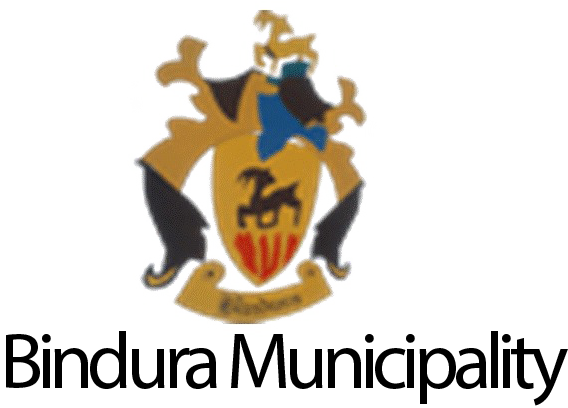TOWN PROFILE
Bindura Municipality is a town you would not set a foot and go unchanged hence its original name “Pindira”. Many came with no intention to settle but they fell victim of the friendly and accommodating environs. The town was established in 1980 upon discovery of Gold and Nickel around “Pindira hills” it migrated to become a settlement in 1992, a village management board in 1914, a town management board in 1929, a road council later rural council in 1967, a town council in 1990 and a Municipality in 1999.
Bindura municipality is delimitated into twelve wards governed by twelve democratically elected councilors, who amongst their number a ceremonial mayor and deputy is elected. The town is situated on the North East and 89 km from Harare. It is in region 2B, endowed with the Black and Red rendzinas soils, suitable for both extensive and intensive agriculture.
The town enjoys the provincial capital status of Mashonaland Central Province, with a population of 44 033 (2012 census at 3% growth rate) that transverses over 1950 hectares of developed and developing land. Its hinterland buses plus/minus 100 000 people in and out of town at any given day, thereby making it the commercial hub of the province.
The town has a solid industrial base and is the commercial hub of the province. Business in Bindura is buoyed by a clientelle from across the width and breath of the province. Communication networks keep the town connected to all satellite towns and service centers in the province. Its hinterland is rich in farming of diverse cash and consumption crops.
The town boasts of housing three universities, ten primary school, three secondary school, three hospitals, two poly clinics, six commercial banks, retail wholesalers, two hotels and eighteen-hole country club golf course, two mines Trojan and Ashanti Gold Fields.
TOWN PROFILE
Bindura Municipality is a town you would not set a foot and go unchanged hence its original name “Pindira”. Many came with no intention to settle but they fell victim of the friendly and accommodating environs. The town was established in 1980 upon discovery of Gold and Nickel around “Pindira hills” it migrated to become a settlement in 1992, a village management board in 1914, a town management board in 1929, a road council later rural council in 1967, a town council in 1990 and a Municipality in 1999.
Bindura municipality is delimitated into twelve wards governed by twelve democratically elected councilors, who amongst their number a ceremonial mayor and deputy are elected. The town is situated on the North East and 89 km from Harare. It is in region 2B, endowed with the Black and Red rendzinas soils, suitable for both extensive and intensive agriculture.
The town enjoys the provincial capital status of Mashonaland Central Province, with a population of 44 033 (2012 census at 3% growth rate) that transverses over 1950 hectares of developed and developing land. Its hinterland buses plus/minus 100 000 people in and out of town at any given day, thereby making it the commercial hub of the province.
The town has a solid industrial base and is the commercial hub of the province. Business in Bindura is buoyed by a clientele from across the width and breath of the province. Communication networks keep the town connected to all satellite towns and service centers in the province. Its hinterland is rich in farming of diverse cash and consumption crops.
The town boasts of housing three universities, ten primary school, three secondary school, three hospitals, two poly clinics, six commercial banks, retail wholesalers, two hotels and eighteen-hole country club golf course, two mines Trojan and Ashanti Gold Fields.
HISTORY OF BINDURA MUNICIPALITY
Bindura town is situated 89km North-East of Harare on the main road to Mt Darwin. The town lies in the ecological region 2 and is the provincial capital of Mashonaland Central Province. It is surrounded by rich Nickel and Gold mining operations and a well developed agricultural farming. It has excellent communication systems with links to all major cities by road, rail and telephone.
The discovery of gold and other minerals in 1890 saw European settlers invading the area. The Prince of Wales Mine was pegged in 1890, followed by the ASP blocks in 1896.Mining on the Kimberly Reefs began in 1901 and by 1912 the Hay mine was opened. 1913 saw the establishment of a settlement near Pindura Hill from which the name Bindura was derived. In 1914 the first Village Management Board was set up to administer the affairs of the settlement. Around June 1929 the Board was replaced by Town Management Board and later on, Road Councils were set to administer transport issues in the surround commercial areas.
In 1967 the Bindura Rural Councils was formed and in 1990 it transformed to a Town Council. The first township, Chipadze was established in 1965. The town has been growing since then. The council was awarded Municipal status in 1997. Today Bindura Municipality has become a big organization with a total workforce of 600 employees and it owns investment assets worth billions of dollars. Service delivery is considered to the main activity of the organization to seven (7) areas namely Chipadze, Chiwaridzo, Chipindura Park, Aerodrome, town, industrial and commercial. Bindura has a total number of 9876 households.
